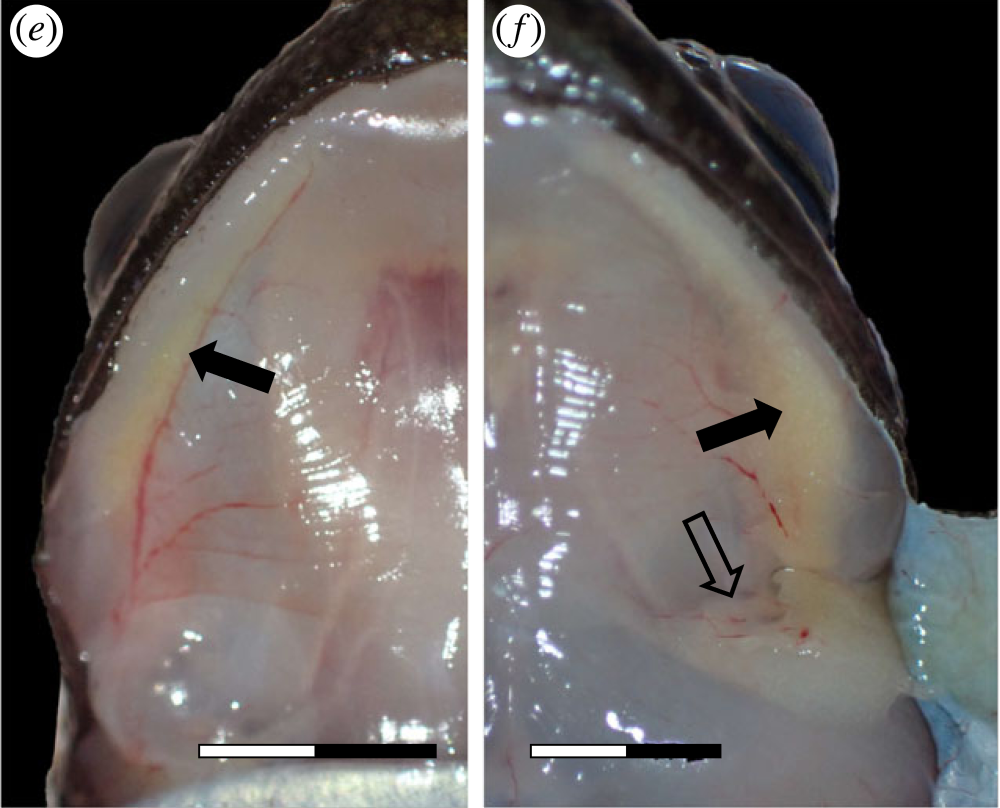A new gland-like strand has been discovered in the curious jaws of saber-toothed frogs. These anurans are nicknamed for the bony protrusions that sit on their lower jaws, and new research suggests they may be packing a surprising form of chemical communication that gets under the frogs’ skin.
There are five species of saber-toothed frogs in the Odontobatrachidae genus. When they were first described several years ago, researchers also noticed that they had a curious gland-like strand along their lower jaws, but exactly what it did was a mystery.
“This tissue reached noticeably close to the fangs,” said group leader of the study’s Berlin team Mark-Oliver Rödel in a statement. “Thus, initially we thought that the gland-like strand and teeth might form a venom apparatus similar to that found in snakes.”
However, the truth was a little sexier than that.
Frogs are famous for their vocalizations, but in recent years a growing body of research has shown that some species may also use visual and chemical cues to communicate. After examining the chemical makeup of these gland-like structures, they revealed there were differences specific to sex, species, and the season.
The development of the “gland” appeared to be linked to reproductive status. Here we see a well-developed strand in an O. natator female with eggs (e) compared to an inconspicuous strand in a non-calling O. arndti male (f).
The gland-like tissue was present in all male and female animals and sat beneath particularly thin sections of skin. They appeared to be most well-developed in reproductively active saber-toothed frogs, which got the researchers asking: Could it be that the saber-tooth’s fangs were made for love, not war?
“Both sexes of each species have their own characteristic chemical profile and we could even identify whether an individual is reproductively active or not,” explained study lead author Marvin Schäfer. “We would not find such a signal if it would not play an important role in the reproductive behaviour of these frogs.”
To add weight to the love bite argument, the gland-like tissues were producing volatile fatty-acid derivatives, something that wouldn’t work as a venom. As leader of the Würzburg group Thomas Schmitt explained, these substances are more commonly associated with insects as a kind of pheromone for attracting their own kind.
The curious jaw morphology of saber-toothed frogs.
Image credit: Museum für Naturkunde
Confirming whether the “gland-like tissue” constitutes an actual gland, or which specific features of the chemical cocktail might be alluring to saber-toothed frogs, requires further research. But the study marks the first time we’ve found evidence of a kind of chemical communication that gets under frogs’ skin, and it’s thought the adaptation could help them to communicate through chemical signals when the environment’s too noisy for them to be heard.
“This study adds a new dimension, opening completely new perspectives for understanding the intricacies of frog communication and its role in their complex social and reproductive behaviours,” concluded Rödel.
The study is published in Proceedings of the Royal Society B: Biological Sciences.
Source Link: Saber-Toothed Frogs Found To Have A Mysterious "Gland" Unknown To Science
